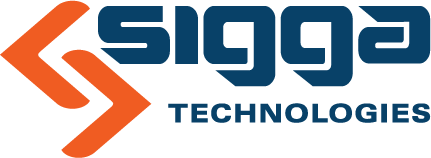Transform Working With SAP Plant Maintenance
April 5, 2023Maintenanceand reliability managers across industries have come to rely on SAP Plant Maintenance (PM). After all, this core component of the SAP ERP helps support and maintain critical equipment and systems. Specifically, it empowers plant operators to:
- Inspect systems and equipment
- Conduct preventive maintenance for ideal operating conditions
- Manage maintenance requests
As a major module within the SAP ERP, SAP PM is crucial to ensuring the smooth flow of information between the different components of SAP. Integration between SAP PM and other SAP ERP Central Component (ECC) modules keeps data in SAP PM current. It also automatically triggers processes in other ECC modules – such as Materials Management and Finance – when necessary. For instance, a repair activity could trigger a purchase requisition for an out-of-stock part.
All these capabilities are crucial for companies striving to excel in a fast-changing industry that has been hit hard by the COVID-19 pandemic and supply chain issues. As they contend with challenges including fluctuating demand, increased safety regulations, exacerbated labor shortages and tightening budgets, companies seek every chance to reduce unplanned plant downtime and ensure plant/worker safety and regulatory compliance. A key opportunity exists in making the most of their SAP PM investment.
Maximizing the value of SAP PM
Most companies implemented the SAP ERP and SAP PM long before modern interfaces and mobile devices were the norm. SAP PM in particular has lagged when it comes to user-friendly features. As a result, SAP PM usage is often limited to a few experienced people with the specialized knowledge to navigate the program. A complicated UI impedes usage, interrupting workflows and increasing the potential for errors and delays. In other words—if workers struggle to navigate SAP PM, they may revert to workarounds, often negatively impacting plant performance.
While working with SAP PM can be challenging, maintenance and reliability managers can optimize their workflow and make the most of the system by better enabling their frontline workers on SAP PM.
Enabling frontline workers
Since the interface to SAP PM is complicated, more companies are cutting out the middlemen and allowing end users direct access to SAP PM through a modern software interface. For maintenance operations, this means putting mobile devices in the hands of frontline workers like maintenance technicians so they can access and capture data quickly and efficiently.
The best mobile apps make it possible to manage tasks and synchronize mobile databases with ERP databases in real time, while enabling complete offline experiences for the maintenance staff. They also provide intuitive interfaces that drive faster user adoption. With real-time access to the ERP system, technicians can quickly check a manual, look for parts, or report a problem.Plus, such mobility keeps techs in the field, enabling greater responsiveness and better resource utilization.
Ideally, maintenance and reliability managers want a mobile solution that:
- Performs well under the high volume of data exchange associated with maintenance processes
- Supports a high number of mobile users
- Makes it possible to grant access to defined workflows by specific users, including third-party contractors
Improving the user interface
Hand in hand with this shift to mobile device access, companies are taking advantage of the ability to customize mobile apps to their workflows. As IT teams face growing pressure to support customizations in the name of digital transformation, the answer has come in the form of software platforms that empower those with little to no coding experience to modify applications. Commonly referred to as “citizen developers,” these users are no longer at the mercy of colleagues and contractors with specialized skills.
Consider the possibilities enabled by tweaks of the mobile maintenance app:
- Should a company require a timestamp in an inspection order for compliance purposes, the interface could be modified so a technician can select and perform multiple operations simultaneously rather than open and mark each item separately.
- Say a global manufacturer wants to streamline approvals within its small plants while maintaining checks within a large site maintenance organization. A simple interface change could enable technicians at small plants to handle certain tasks – such as reserving materials – without supervisor approval.
Companies could also dramatically improve workflows by adding simple features to their SAP PM interface, such as:
- A drop-down menu in place of an open text field to capture common reasons for failures as part of the root cause analysis procedure to reduce equipment downtime, Mean Time to Repair (MTTR), and optimize Mean Time Between Failures (MTBF).
- Add a new field to an existing inspection checklist (e.g.,a pressure sensor was added to a piece of equipment).
- Verification steps to a process to address non-compliance(e.g., including a step to ensure a technician is in close proximity to an asset being inspected).
- A process that automatically sends an email to the right person when a certain action is taken(e.g.,when an urgent notification is submitted, immediately notify the maintenance supervisor).
These are just a sampling of the ways that manufacturers have modified their mobile maintenance app to their unique working process.
Create a connected workforce with Sigga
By following these tips for getting the most from SAP PM, maintenance and reliability managers can optimize the user experience and improve plant productivity and efficiency. To that end, organizations using Sigga experience greater ROI from SAP PM.
Sigga’s no-code mobile platform helps companies quickly and easily create a connected workforce and does so without the complexity or the IT developer resources associated with many mobile enterprise asset management (EAM) apps. Combining Sigga’s mobile maintenance app with SAP PM empowers companies to easily digitize paper-based processes, in turn empowering workers in the field and improving plant performance.
